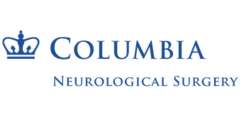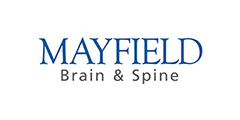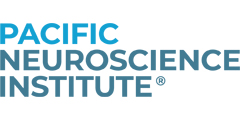Radiation
Radiation therapy is another treatment option for acoustic neuromas. Typically for acoustic neuromas, stereotactic radiation is used because this allows the radiation to be delivered with increased precision to the tumor while minimizing the radiation exposure to the normal, healthy tissues surrounding the acoustic neuroma such as the brainstem, cerebellum, facial nerve, and cochlea.
Stereotactic radiation can either be delivered as single-fraction radiosurgery (SRS) or by dividing the radiation dose over multiple sessions which is termed fractionated stereotactic radiotherapy (FRS). Both forms of radiation (SRS and FSR) work similarly by damaging the DNA within the tumor cells. The cells can no longer divide and eventually die over time, a process called necrosis. Both techniques are performed in the outpatient setting and do not require either general anesthesia or a hospital stay.
Over the last several decades, as the technologies for delivering stereotactic radiation have improved, an increasing number of patients have chosen to receive stereotactic radiosurgery as the primary treatment for their acoustic neuroma. There are several different commercially-available machines that are used to treat acoustic neuromas with the technologies differing in their source of radiation and how the radiation is precisely delivered.
- Gamma Knife® machines derive their radiation from a fixed-array of Cobalt-60 sources. These machines are typically used to deliver SRS in a single-session, although the newest platform (Leksell Gamma Knife® Icon™) allows for fractionated delivery (FRS).
- Linear Accelerator (LINAC) machines work by accelerating electrons to produce high-energy X-rays. The beam of X-rays (photons) is then shaped to the tumor as it exits the machine using a series of collimators and by rotating either the patient or the machine. LINAC machines are produced by a variety of different manufacturers with common trade names including CyberKnife®, Trilogy®, Novalis Tx™, and TrueBeam™ among others, with each machine available for both single-session (SRS) and multi-session (FSR) treatment.
- Proton Beam machines use a particle accelerator to generate radiation energy in the form of protons which can be delivered as either SRS or FSR.
Despite their differences, similar results in terms of effectively treating acoustic neuromas and avoiding side effects have been reported for each of the stereotactic radiation machines. The treatment team should consist of a neurosurgeon and/or a neurotologist and a radiation oncologist. The patient and the treatment team typically consider a number of factors before determining whether radiation therapy is appropriate including the size of the acoustic neuroma and the rate at which it is growing, the patient’s age and overall health, and the patient’s symptoms including the degree of hearing loss, balance problems, and vertigo. Typically, acoustic neuromas that are greater than 2.5 – 3cm in size are not considered ideal candidates for radiation therapy as these larger tumors often compress the surrounding brainstem and the potential for side effects from the radiation is increased.
A very important difference between surgery and radiation for acoustic neuromas is that the tumors do not typically shrink in size after radiation. Although the radiation effectively kills the tumor in more than 90% of patients, the majority of acoustic neuromas remain visible on an MRI but do not continue to grow (i.e., remain stable). Additionally, the tumor can experience internal swelling for up to 12-18 months after the radiation was delivered and this swelling can potentially cause side effects. For this reason, patients with symptoms primarily related to the size of the tumor are often advised to undergo surgical debulking of the acoustic neuroma before any radiation therapy is considered. The amount of hearing loss caused by the acoustic neuroma is another important factor that should be considered prior to any treatment for an acoustic neuroma. The most common symptom that leads to discovery of an acoustic neuroma is hearing loss, but more and more patients are being diagnosed with relatively good hearing on the side of the tumor. Although radiation therapy usually stops the tumor from growing, hearing loss can continue to worsen over time due to damage caused by the radiation to the cochlea and cochlear nerve. Several studies have suggested that the likelihood of delayed hearing loss can be decreased by reducing the radiation dose to the cochlea, but for acoustic neuromas that have grown very close to the cochlea, it is not always possible to decrease the dose to the cochlea while still delivering a high enough dose to the tumor to prevent it from growing. Fractionated stereotactic therapy (FSR) is performed at some medical institutions for patients with intact hearing, as dividing the radiation dose into fractions may potentially minimize the long-term injury to the cochlea and other healthy structures.
Just as for surgery, the experience of the team in treating acoustic neuromas with radiation therapy can affect outcomes. Excellent short- and long-term (>10 years) results in terms of controlling tumor growth have been reported using radiation therapy for acoustic neuromas. When SRS and FSR are used in appropriate candidates, the risks of side effects from the radiation are extremely small. Injury to the surrounding structures such as the facial nerve and trigeminal nerve can result in facial weakness or numbness/pain, but most modern studies have reported the likelihood of these side effects as <1-2%. The long-term rates of hearing preservation following radiation therapy are less clear and depend on a variety of patient-specific complex factors. Additionally, patients with significant vertigo and disequilibrium often do not experience improvement in these symptoms after radiation and may potentially have some worsening after treatment. Although radiation effectively kills the acoustic neuroma by altering the individual tumor cell DNA, the incidence of transforming the acoustic neuroma from a benign to a malignant tumor (i.e., malignant transformation) as a result of DNA mutation has fortunately been extremely rare. The likelihood of this transformation, however, may be increased in patients with NF-2 who are more prone to tumor formation due to a genetic mutation.
Once radiation has been used to treat the acoustic neuroma, surveillance imaging, typically with MRI scans, should be performed for at least 10 years after the treatment to ensure that the tumor does not continue to show any signs of growth that would require further treatment.
































